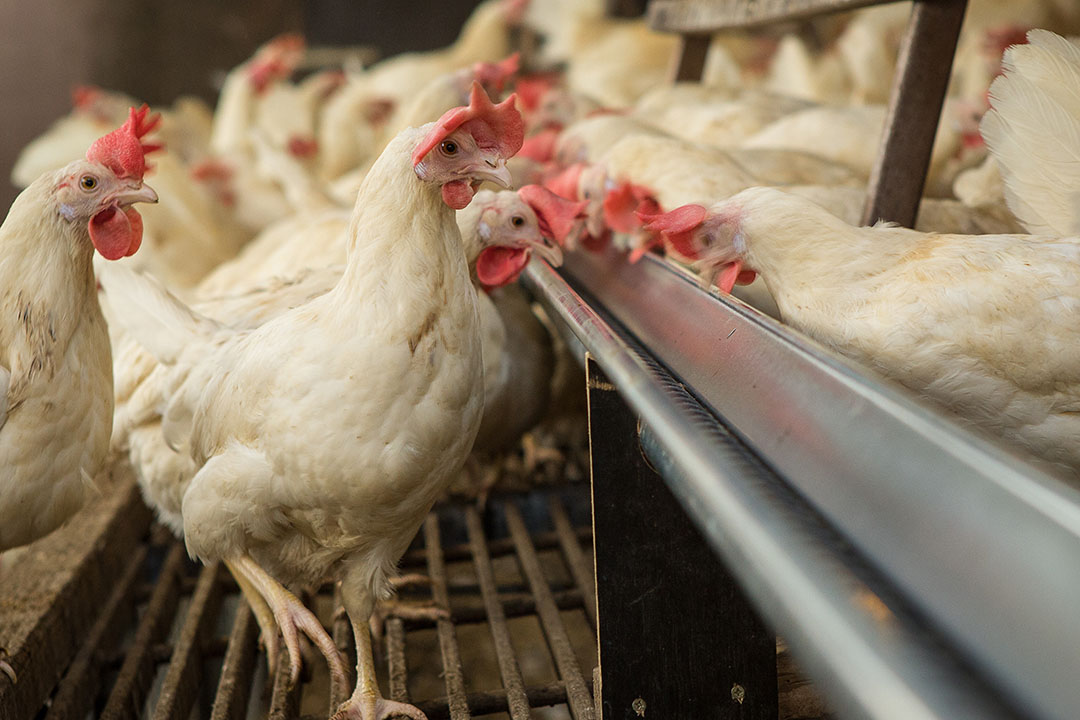Transforming the way we manage mycotoxin-related stress

Technological advancements for the detection of mycotoxins have exploded in recent decades. However, we are still missing the obvious: we haven’t yet quantified and thus, assessed the true exposure of animals to mycotoxins.
Although field surveys and feed risk assessments are valuable, their real usefulness (when applied in isolation) remains highly questionable, since they fail to reveal the true exposure of animals to mycotoxins. Feed sampling per se, is problematic. Nearly 90% of the error comes from the sampling itself, whereas only ~ 10% is down to analytical error.
Everyone is aware of feed ‘hot-spots’. Also, routine feed sampling does not reveal masked mycotoxins.
Both limitations can lead to a major underestimation of the true risk.
Missing the bigger picture
But this is only part of the problem. The second, and perhaps biggest limitation, is that we miss the bigger picture by continually ignoring what animals face under real farming conditions: a continuous exposure to several stress factors. From climatic conditions to a number of stress challenges via feed (e.g. ANFs, low quality or change of feed), vaccinations, infections, high performance, etc. To contextualise this: the cumulative impact of long-term exposure to multiple mycotoxins, even at a low level, may be completely different on the same farm between winter and summer. Thus, we desperately need comprehensive technologies with multiple modes of action and proven efficacy in vivo.
 |
| Myco-Marker offers novel evaluation of the true exposure of animals to mycotoxins combined with an easy, practical system for field application. Photo: Innovad |
Technologies that can help the animal confront multiple stress factors under the prism of concomitant mycotoxin exposure, even if the latter is considered low, and new evidence highlights that such exposure exists.
Detecting mycotoxins in blood
Innovad, in collaboration with the University of Ghent, Belgium (UGhent), have conducted research that validated the precise detection of mycotoxins and, their transformed phase I and phase II metabolites, in the bloodstream of animals using a state-of-the-art chromatography-based analytical methodology (LC-MS/MS). This method of detection has now been extended to a broad pool of 29 biomarkers of exposure for chickens and pigs. The validated methodology was used to evaluate the in vivo efficacy of our detoxifier technology, Escent S, with very promising results (see Figure 1). The research revealed that Escent S exerted a significant detoxifying ability by reducing systemic exposure of blends of mycotoxins in both animal species. Although this is of importance in itself, the real breakthrough is the drift away from a simplistic toxin binding approach, since non-polar mycotoxins (such as zearalenone) were also reduced systemically under the influence of Escent S.
Figure – 1 (a) Mean high resolution mass spectrometry (HRMS) peak area-time curves (+SD) of deoxynivalenol-sulphate (DON-S) and, (b) Mean concentration–time curves (+SD) of AFB1 in plasma of broiler chickens after oral administration of a bolus of DON (5 mg/kg feed), OTA (2.5 mg/kg feed), and AFB1 (20 mg/kg feed) mix, either with the Escent group, (n = 8) or without (control group, n = 8).

A user-friendly service
Primary research provides answers, but is of particular importance when it translates to a field tool. The joint research with UGhent has led to Myco-Marker, a novel diagnostic tool that is currently under patent. Myco-Marker has been developed to be deployed as an easy, cheap and user-friendly field service. The end user needs to just place a small drop of blood on an appropriate paper (FTA) card.
Plasma separation is not required and neither do import restrictions apply and we can receive samples from all over the world.
 Managing Mycotoxins – special publication
Managing Mycotoxins – special publication
Mitigating mycotoxins is a huge global challenge with no universal solution. Developments need to happen from all sides of the supply chain. Here, the latest breakthroughs across these areas are explored.
Measuring true exposure to mycotoxins
What Myco-Marker offers for the first time to the farmer is the ability to measure the true exposure of animals to mycotoxins, providing extremely high sensitivity. Namely, the exact quantities circulated systemically within the animal, at any given moment. In Myco-Marker this is combined with the precise analytical detection (again via LC-MS/MS) of key mycotoxins and their main fungal and plant conjugates in feed. However, at Innovad we are taking things a step further. We aim to correlate the presence of mycotoxins in feed and their actual levels in blood (biomarkers of exposure) with the true impact on animals. To do this, Myco-marker® captures the animals’ health picture via a detailed questionnaire. All 3 elements will help us build a database and pull-out meaningful trends in the years ahead.
![]() Mycotoxin Knowledge Centre:
Mycotoxin Knowledge Centre:
This interactive tool provides information on the impact on livestock health, an A-Z, plus regulations.
Stress management programme
The Myco-Marker diagnostic service is an integrated part of Innovad’s specialised platform for stress and toxin control. Escent S is a unique technology that helps animals to cope with abiotic and biotic stress via a multifaceted, holistic approach.
The 5 modes of action of Escent S are backed-up by in vivo data:
- Preventing oxidative stress
- Supporting liver and kidney functions
- Stimulating the animal’s immunity
- Triggering biotransformation processes within the liver and detoxification
- Adsorbing and binding polar (water-soluble) toxins
Author:
Dr Christos Gougoulias











